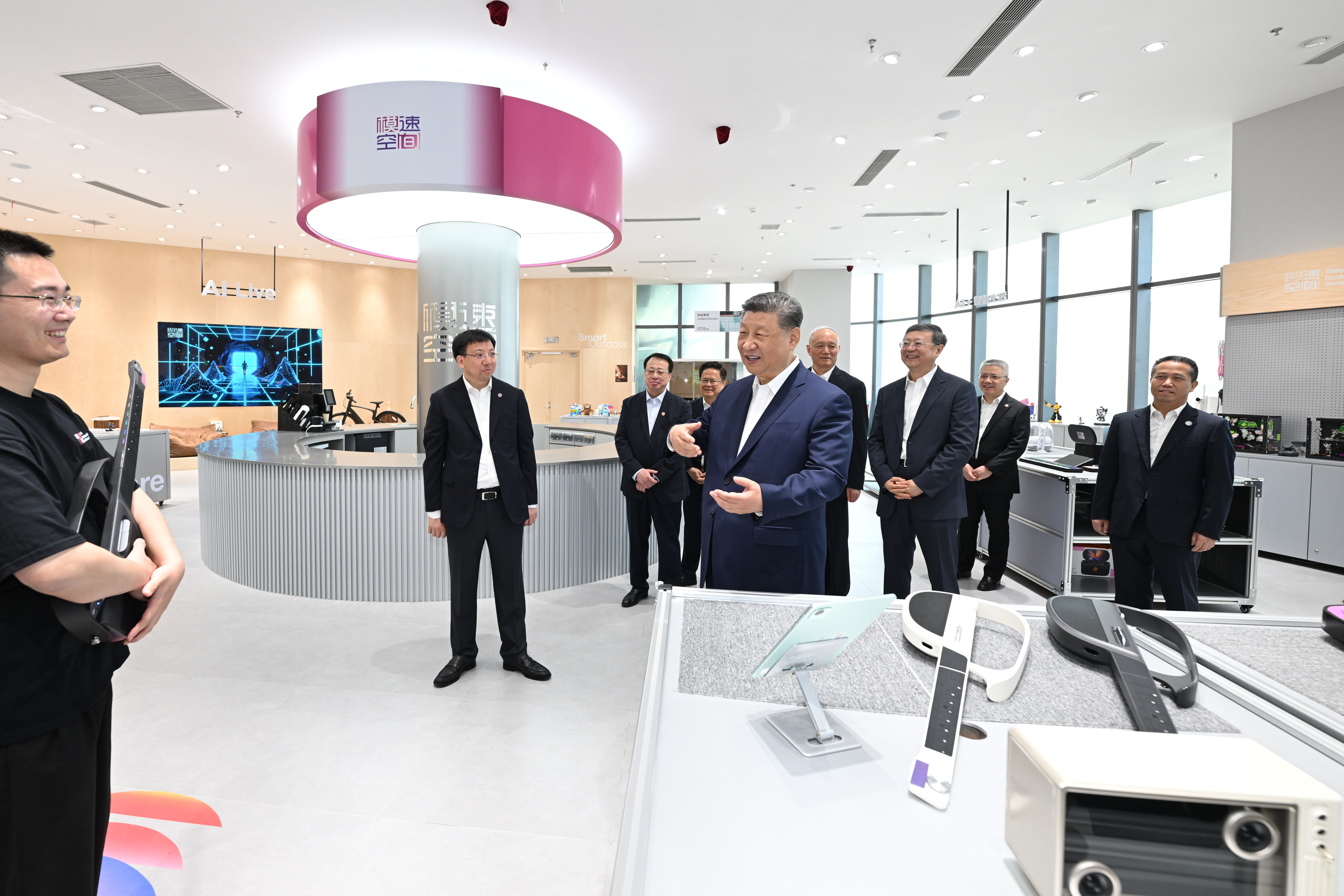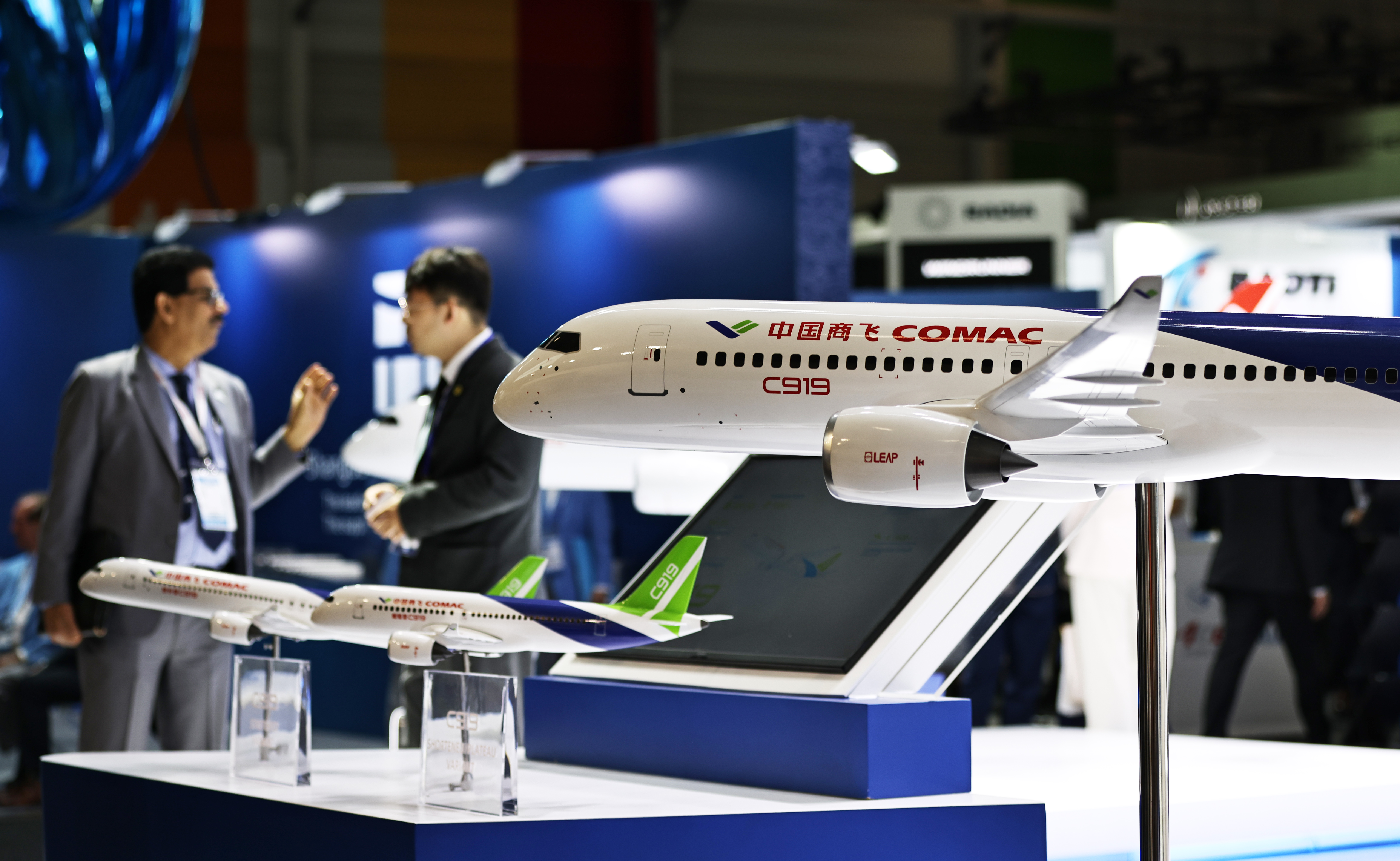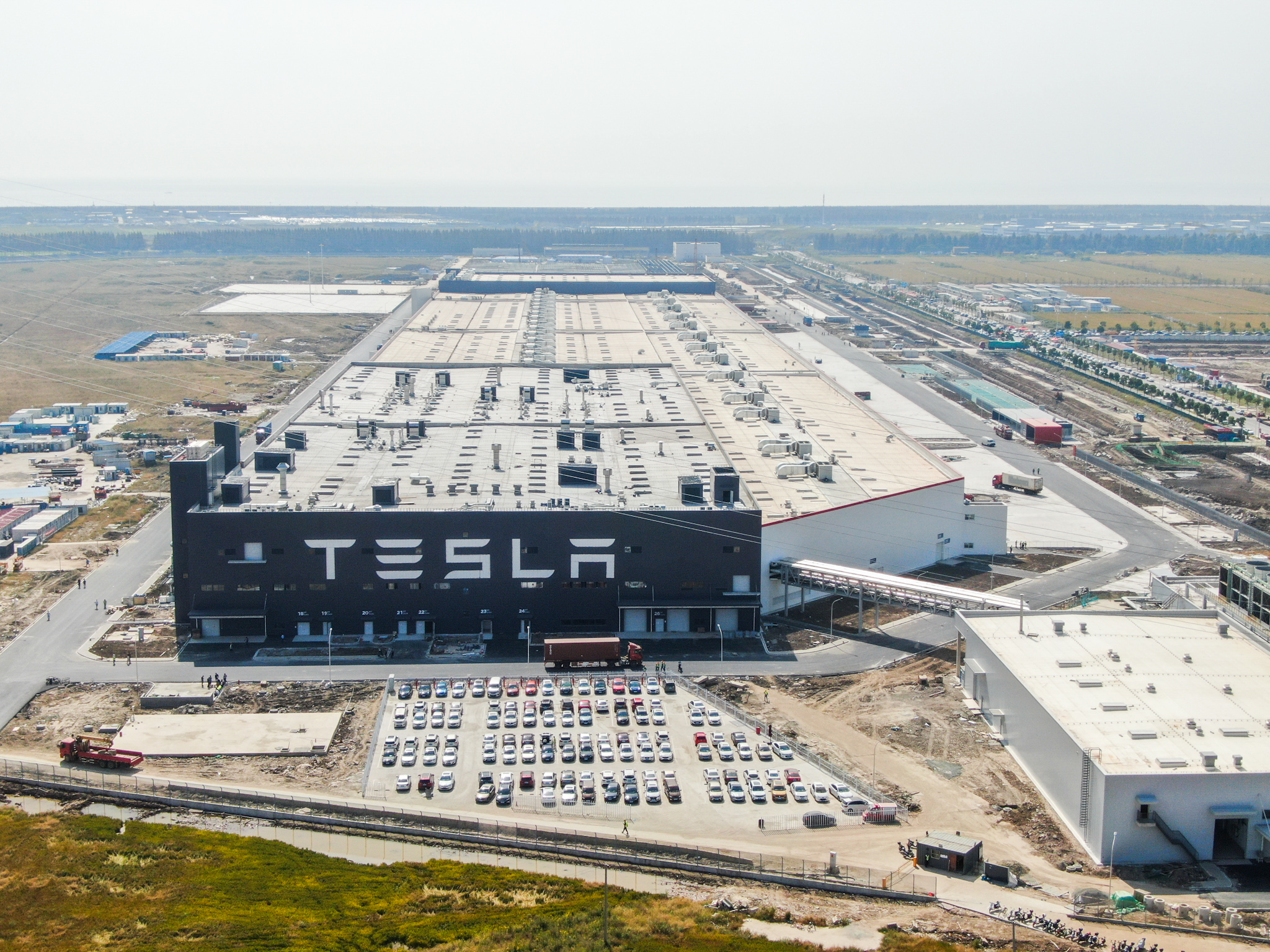今日上海
上海融合传统与创新,塑造未来 - 2025年07月07日
Shanghai blends tradition with innovation as it shapes the future
Shanghai, a vibrant metropolis that seamlessly marries tradition with innovation, stands as a shining example of modern China's progress across multiple fronts. From spearheading scientific and technological innovation to preserving its rich cultural heritage, the city continuously redefines excellence in urban governance.
Innovation and modernity
Shanghai has been doing its utmost to develop itself into a global hub of scientific and technological innovation in recent years.
On the West Bund waterfront in downtown Xuhui District, the Mosu, or Model Speed Space has become a new landmark as China's first specialized incubation hub for artificial intelligence models. More than 60 AI LLM (large language model) companies, along with over 200 related firms in the AI industry chain, have been established.

Chinese President Xi Jinping visits Model Speed Space in April.
The Shanghai-based Commercial Aircraft Corporation of China, or COMAC, leads China's effort to build its own large passenger planes.
The company's main product is the C919 jetliner. It is designed to carry up to 192 passengers.
COMAC was founded in 2008 and is backed by top state-owned companies. So far, 20 C919 jets have been delivered. More than 1,000 orders have been placed by Chinese airlines.

A model C919 on display at the 2025 Paris Air Show in June.
The Tesla Gigafactory Shanghai, located in the Lingang Special Area, is another prime testament to Shanghai's prowess.
As Tesla's first overseas mega-factory, it not only accelerates the production and distribution of electric vehicles globally but also spurs the development of the local new-energy vehicle industry chain, fostering innovation in battery technology, intelligent manufacturing, and sustainable transportation solutions.
Thanks to Shanghai's supportive business environment, the plant progressed from groundbreaking to production in just one year.
To date, it has delivered more than 1 million electric vehicles worldwide.

The Tesla Gigafactory in Shanghai.
Another landmark is the Yangshan Deepwater Port, a marvel of modern engineering. With its automated container terminals powered by cutting-edge technologies, it represents a leap forward in smart port operations, optimizing logistics efficiency and firmly establishing Shanghai as a crucial node in the global shipping network.
As a key stop along the Maritime Silk Road, it offers insights into how China's smart ports are connecting to global supply chains and driving sustainable development.
Yangshan Deepwater Port
History and tradition
In terms of cultural relic preservation, Shanghai spares no effort.
The Shanghai Museum East Branch, with its state-of-the-art facilities, provides a grand stage for displaying a vast collection of historical artifacts, safeguarding and promoting Chinese civilization.
Sitting in the center of vibrant Pudong New Area, a front line and pioneer in implementing China's opening-up policy, the museum uses digital guides, 3D displays and immersive storytelling, in an effort to bring 5,000 years of Chinese civilization to life.
Popular exhibition zones include the "Bronze Civilization" and "Silk Road Light and Shadow" galleries. On the rooftop, live performances of Jiangnan (regions of the south of the lower reaches of the Yangtze River) music offer visitors a break from the tech-driven displays.
The Memorial of the First National Congress of the Communist Party of China is not only a solemn place commemorating the Party's birth in 1921 but also a well-preserved site that educates the public about China's revolutionary history.
Standing in central Shanghai, the museum uses artifacts, rebuilt scenes and multimedia to tell the story. It shows how China moved toward modernization. The site draws visitors from both home and abroad interested in China's political history and development.
Not far from the memorial is Xintiandi. The area once consisted of old stone-gate houses known as shikumen. Today, it is a trendy shopping, dining and entertainment spot.
It is known for haipai, or the Shanghai-style culture, which blends Chinese and Western styles, as well as history and modernity.
The traditional residential buildings have been transformed into trendy cafes, boutiques, galleries and restaurants, attracting both locals and tourists from home and abroad. It demonstrates how cultural heritage can be revitalized in a commercial and cultural context.
Meanwhile, Yuyuan Garden, a classical Chinese garden dating back to the Ming Dynasty (1368-1644), has been meticulously maintained. Its pavilions, rockeries, and ponds are not only a visual treat but also a living record of ancient Chinese gardening art and architecture.
Around it, narrow streets have food stalls and small shops. Visitors can see shadow puppets, silk embroidery and other local crafts.
The vibrancy of the Yuyuan Shopping Mall with skyscrapers in the backdrop also shows the perfect blending of history with modernity in Shanghai.
New cultural landmarks
New cultural landmarks are also emerging in Shanghai.
The West Bund Art Museum, located along the Huangpu River's Xuhui section, is one of the newest cultural havens that hosts international art exhibitions, fostering cross-cultural exchanges and elevating Shanghai's status as a global art hub. Some of its first-rate exhibitions, introduced in partnership with the Centre Pompidou Paris, reflects the city's respect for cultural diversity.
Notably, the Xuhui Riverfront used to be a cluster of industrial ports. In the wake of the urban regeneration drive, it has evolved into a state-of-the-art, revamped urban space combining cultural creation, business, office, and public space.
The open theater, public art and creative facilities fully testify to the concept of an inclusive city.
City governance
When it comes to urban governance, Shanghai sets high standards. Take the Xuhui Riverside Public Service Center as an example. It integrates community services, public activities, and environmental management initiatives.
Through digital governance tools and community-based management models, it effectively addresses residents' needs, promotes community cohesion, and showcases how a megacity can be managed in an efficient, inclusive and sustainable manner.
Covering a space of around 2,000 square meters, it opens 7am-9pm everyday all year round, and is capable of handling in excess of 2.1 million visitors annually.
All-day dining provided at the community canteen enable visitors a space to eat and relax. Fully testifying to how this former rust belt has morphed into a development model in urban regeneration, it showcases the concept of "a city for the people" as empowered by cutting-edge governance in a waterfront area.
Source: City News Service
